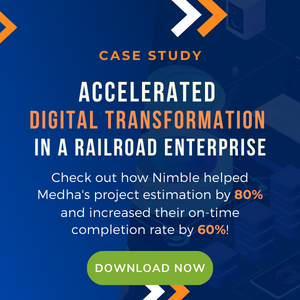An Introduction to Resource Management in Projects

Project/ Work Management 101
Explore
What is Resource Management?
In today’s competitive business environment, where business organizations of all sizes are striving to embrace digital transformation and artificial intelligence to gain a competitive edge, managing a wide variety of projects efficiently has become more important than ever. The discipline of project management, along with resource management, has become critical around the globe.
Resource management is the proper acquisition and utilization of various resources needed by these projects, with the right strategy to maximize efficiency and deliver projects successfully within the constraints of time and budget. In other words, effective resource management is indispensable to project management as it ensures that the right resources are used optimally to execute projects successfully.
This article will walk you through the key aspects of resource management.
First, the Basics- What Are ‘Resources’ In A Project?
Before we delve into the details of resource management, let us understand what resources are. Let’s take this simple real-life example. Suppose you have to ‘cook’ for a few guests coming to your home. That right there is a project!
After you decide what dishes are to be cooked and in what quantity (scope of the project), the next thing is to determine the ingredients list and getting them ready. Now, every single item that is required for the process of cooking the food for the guests (the client) can be termed as a resource. The kitchen is the facility or the “project site”, the ingredients are the materials, the utensils are the tools and machinery required for a project, the cooking gas or electricity are the consumables…. you get the idea!. Each of these items is a different type of resource needed for the project. The money spent in the entire process can be termed as the budget or the funding for your project; and you and your assistants, including their knowledge and culinary skills, are the human resources (the people involved in a project and the knowledge and skills they bring to the project or the organization as a whole).
In other words, resources can be anything (humans, knowledge, skillset, tools, machinery, equipment, materials, consumables, capital, etc) that help a business execute a project, deliver value, and achieve its goals.
Some common issues faced by every project manager are:
-
Every project has its own unique resource requirements, therefore needs different planning as well.
-
Often, a project may not have enough resources. On the other hand, you may have projects where your resources may be underutilized, that is, you have more resources than required, a rare but plausible situation.
So, What Is Resource Management?
Let’s continue with the above-mentioned example. You have all the ingredients and other resources in place. Now, the challenge is to use the right ingredient for the right dish and in correct quantity. Over- and under-utilization of any ingredient or using the wrong ingredient will hamper the taste of food. The same applies to human resources as well. The right task should go to the right person with the required skill. Managing all the resources in a proper manner and in the right proportion will make your cooking endeavor a successful one. And, you, being the project manager, shall supervise the tasks. This is the concept of ‘resource management’, that is, using the right resource in the right way to achieve desired result.
Resource Management involves identifying the resources for a project, assigning or allocating them to the specified tasks of the project, working out the imbalance between the need and the availability of resources; and then actually managing them once the project has been fully staffed with all the required resources. In addition, project managers are expected to provide forecasts of their future resource requirements based on project scope and progress and give an overall estimation of resource requirement, time and budget based on a bottom-up estimation process. These key activities are described below in brief.
Key Activities Of Resource Management
The key activities of resource management involve – resource estimation/ forecasting based on project scope and duration, allocation of resources to the project, monitoring and managing resource utilization to ensure optimal usage, and finally, managing resource dependencies, conflicts and shortage using techniques such as resource smoothing and leveling.
Some specific methods for each of these are described below.
-
Bottom-Up Estimating: Probably the most common/ popular method of resource estimation, bottom-up estimating is a process of breaking down each and every component of a project, estimating the resources needed to do each of those components, and summing them all up to come up with the overall estimate of the entire project. This process gives the most detailed estimates by computing the resource requirement at the lowest level task and adding them up to determine the project level requirements. It gives an estimation of the time and budget of the project as well. However, this method is often criticized – for good reason – that small levels of overestimation can result in a large amplification (overestimation) of overall resource requirements at the project level.
-
Resource Forecasting: Resource forecasting is the process of predicting project demands, supply, vacancies, and resourcing costs in advance. It helps to analyze the ever-changing scenarios of the projects so that businesses can take corrective measures proactively. Using past and present data, project managers can predict resource requirements for the future and plan accordingly. Resource forecasting ensures that your resource supply is directly proportional to the resource demand and you are able to deliver results without missing the deadline or overshooting the budget throughout the project lifespan.
-
Resource Allocation: The most basic resource management task is resource allocation. This is the process of efficiently identifying the available resources and assigning them across various projects of the organization as per the demand.
-
Resource Utilization: Resource utilization is the process of tracking how much of the assigned resources are being used up by the projects that they are assigned to. This process ensures that every resource is utilized in the best possible manner.
-
Resource Leveling & Smoothing: It is frequently possible that there are more projects in an organization than available resources. To solve this problem, teams must adjust the start and end dates of specific activities (on which those resources are needed) or the overall project, so that the total demand for those resources is equal to or below the supply of the same. This process of adjusting the start and end dates is called resource-leveling.
Resource smoothing, on the other hand, comes into practice when the time constraint becomes the main consideration for a project. You may come across situations when a project has a strict deadline. In such cases, teams need to adjust the resources in a way to delay the tasks that are not on the critical path to prioritize the ones that need to be completed on time. The process of adjusting the tasks and activities of the resources is known as resource smoothing.
While resource smoothing is about managing time constraints, resource leveling is about managing resource constraints. In real-life projects, we often end up needing resource leveling and smoothing together. Both the processes prevent resource burnout and boost productivity.
Summary
We hope this article gives you a fair understanding of resource management and its key activities. Resource management, if done right, provides project managers and leaders with a transparent view of all available resources in the organization which prevents business leaders from taking up projects with unrealistic demands and goals. It ensures that when you are entrusted with a project, you have a structured breakdown of the processes that need to be followed and a clear insight into the resources required to carry out the processes in a planned manner.
Nimble SwiftEnterprise is an AI-driven Enterprise Agility Platform for managing successful Digital Transformation Initiatives. It allows you to plan, track and monitor all your programs and projects effectively and efficiently. Get in touch with us to know more and plan a free customized demo.
Check out Nimble Now!
Humanize Work. And be Nimble!





